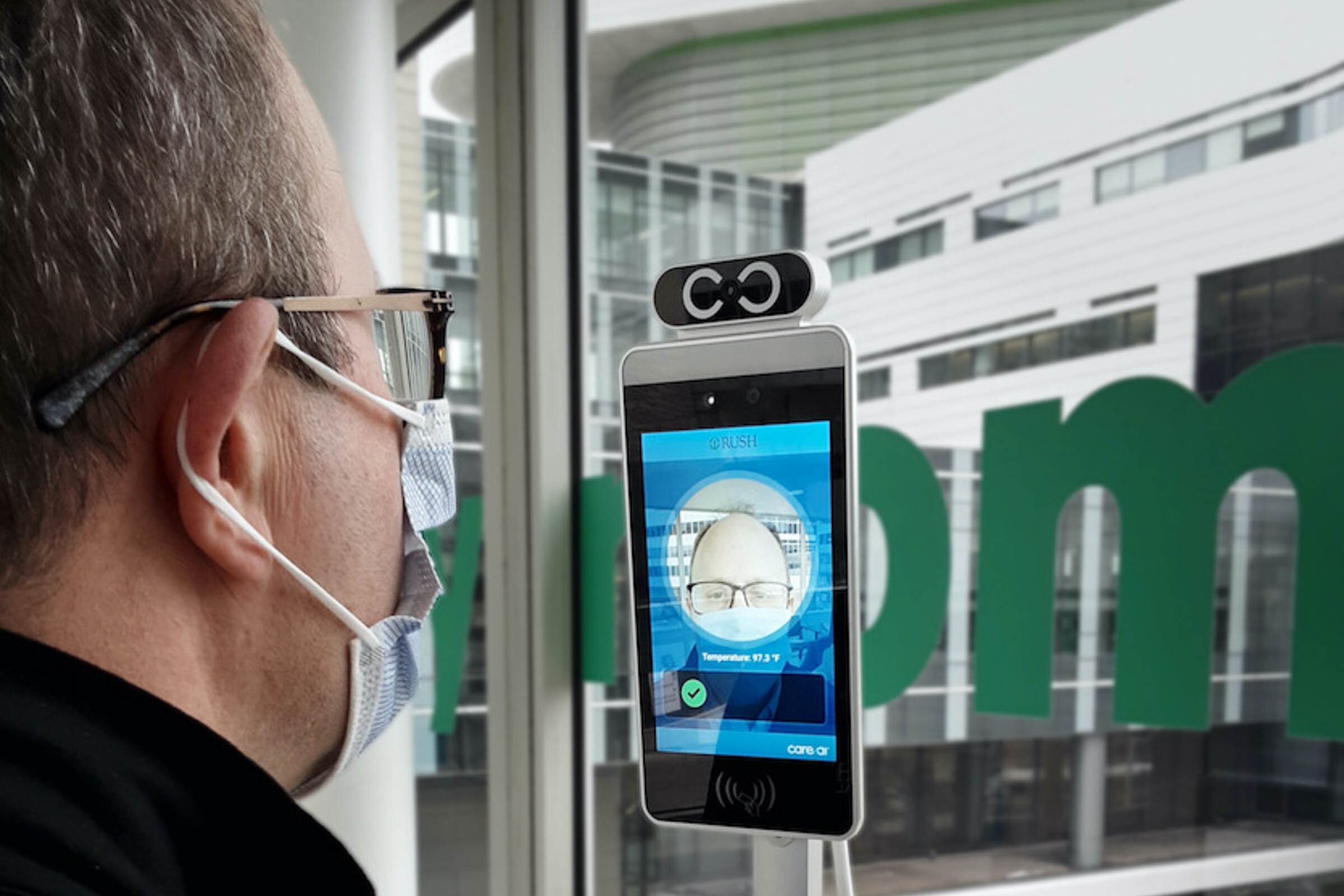Are you ready? A Not So Futuristic Account of Returning to the Office

Kyle Dunaway
Director of Workplace TechnologyKyle has 12 years of experience designing and implementing technology systems in a variety of environments. He excels at managing technology projects, developing standards and best practices, and delivering high quality audio visual systems that enhance the workplace. Kyle loves helping organizations optimize technology to create highly efficient, effective work spaces.
Waking up this morning, you realize today will be your first day back in the office. It’s been months, and things have certainly changed. As you start your old morning routine, you glance through all of the policies your company has put in place to help keep everyone safe and secure.
Are you ready?
After parking your vehicle, you approach the once incredibly heavy stainless steel front door. Now it senses your presence and opens without contact. You put on your transparent face mask that allows your teammates to see your facial expressions while shielding you from spreading any virus.
You’ve read the latest company newsletter and your first stop in the office will be the digital thermal scanner in the lobby. You approach it and stand a few feet away from the display which shows you a real time thermal scan of your face and head. A perfect 98.6 degree reading verifies that you’re safe to move about the office.
You realize you have a meeting starting in ten minutes, but first you decide to grab a coffee. You enter the lounge and notice Tom is already at the coffee machine. No problem. You stand behind the elegantly marked, six-foot spaced hashes in the carpet and pull up the coffee machine app that lets you specify your blend without touching the machine. Once Tom gets his cup, you place yours under the nozzle and your single-origin Costa Rican brew starts dripping.
Getting close to your meeting start time, you realize the office layout is completely different. You aren’t sure where your conference room is, and come to think of it, you aren’t sure you even reserved it! You see the digital map of the floor plan on the signage display in the hallway. You scan the office floor plan and see the red and green spaces, signaling if they are occupied or available, and for how long. Ah, you did forget to reserve Mt. Hood Conference Room, but it’s still available for the time you need. Again, with a quick navigation to a handy app, you reserve the room for your meeting. The app automatically adds the room to the meeting invite so other participants know where to meet. On the digital map, the room turns from green to red, and now everyone knows it’s in use.
You walk through the winding hallway, stopping to talk to a few folks along the way. You can’t help it, social interaction is what you’ve missed the most! As you approach the room, you see a display mounted on the wall outside the door clearly indicating “Mt. Hood Conference Room,” and your meeting details just below. The optical LED inside the display’s glass pane turns red, letting other passersby know from a distance that the room is reserved.
You enter the room, and notice that when you reserved it a few minutes earlier, the app automatically sent your video conference details to the room’s audiovisual system. With one push of a button on the touch screen control panel, the meeting is underway. You can see other colleagues who have joined the meeting on the large display on the wall in the front of the room. Some of them are located in various parts of the world. Yet, they still offer confirmation for how well they can see and hear you, and one from Hong Kong even comments how it feels like they are right there in the room.
As you get started, you realize you have some articles to share and plans you need to mark up with the team. You stand up and approach the mobile digital whiteboard next to the display, and with a few digital button pushes, you join the whiteboard to the virtual meeting as well. Now, the whiteboard’s canvas becomes the digital canvas all participants can see clearly from all locations right inside the meeting’s window.
As you seamlessly flow between important documents and media, and annotate plans to convey key points with the team, you realize that a few important participants weren’t able to make it to the meeting. Luckily, you thought to record your session so the meeting can be sent in video format to all who couldn’t join. Knowing that some will want to reference these topics at a later time, you assure the attendees that you’ll email them a copy of the whiteboard notes after the meeting. Everyone can focus directly on your message.
Though this may seem like the distant future, these experiences are ones that exist today. For many, these technologies are already shaping the way their teams communicate. Does your team have the right tools to drive your business into the future?



